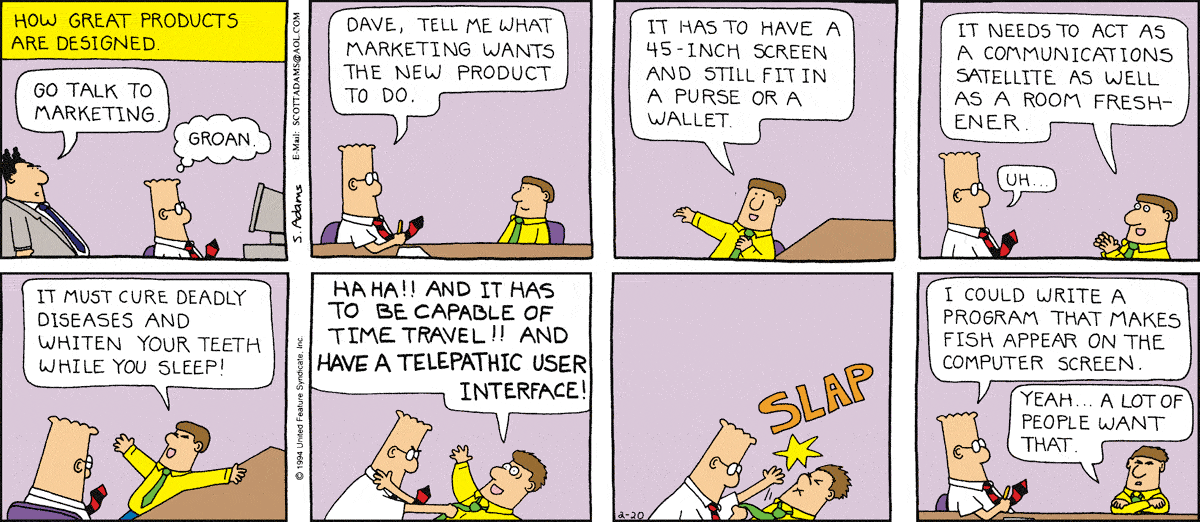If we had asked customers what they wanted, they would have said a faster horse.
Henry Ford
It takes a lot of effort to accept our brains skew our perception. Huge industries like dieting, exercise, nutrition, and dating all service consumers believe their know their preferences, but will time and time again choose differently. Our thinking is biased by the hardware it runs on and by the software that evolved on it.
Revealed Preference, explain the gap between what people think they want, and want their actions reveal. Often this is unconscious but powerful; consider the difficulty in finding a healthy relationship if you don’t know who you like.

Road & Track Magazine recently explained why vehicle sales can decline in the years after initial release. Novelty plays a role, but the article suggests that iterative improvements can cause products to drift away from what originally drew them. People like their big SUV; making it smaller to easily park degrades the primary performance dimension.
The impact can be real: when a manufacturer listens to consumers, and directly implements their feedback, it can hurt sales.
Cadillac’s Seville STS of the early Nineties was a shocker: wide, low, powered by a dual-overhead cam Northstar V8. It had a broad stance, large C-pillars, and a sharply raked windshield. It had great “presence,” that indefinable quality that makes a car look good and desirable. It sold astonishingly well. But happy owners, when questioned, said that visibility could be better out of the windshield, sides, and back. Armed with this useful feedback, product planners guided designers into the 1998 Seville STS. More upright windshield. Less tumblehome. Wider roof. Thinner C-pillars. Cadillac had checked all the “dissatisfiers.” The car was mechanically better but got a disappointing reception. The reason: Customers just didn’t like the way it looked.
Revealed preferences are a powerful way of separate the wheat (good feedback that can drive iterative improvement) from the chaff (consumers confabulating about what they would want differently).